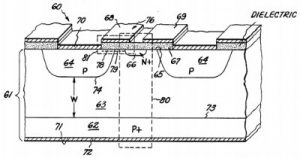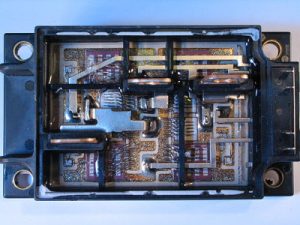Since the Industrial Revolution, access to energy and power has been crucial to economic prosperity throughout the world. According to statistics published by the U.S. Energy Information Administration (EIA), energy usage in the U.S. has increased from 0.2 quadrillion British thermal units (Btus) in 1775, when wood was the only fuel source available, up to a whopping 91.5 quadrillion Btus in 2009 split between petroleum, nuclear, coal, hydroelectric, natural gas and wood sources, the latter of these accounting for 1.9 quadrillion Btus of U.S. energy consumption.
Our economic productivity, however, is not simply based on how much energy we use, but how efficient we are when we use it. Energy costs money, so getting the same productivity using less energy is a business opportunity which can seldom be ignored. The last few decades have seen some incredible increases in energy efficiency in the U.S. The American Council for an Energy-Efficient Economy reports that between 1980 and 2014, U.S. gross domestic product increased by 149 percent while energy usage in this country only increased by 26 percent. A 2013 report from the Alliance to Save Energy cites figures which indicate that the U.S. would have consumed 207.3 quadrillion Btus in 2007 had energy productivity had remained constant from 1970 going forward.
One of the innovations developed during the 1970s which has helped realize great increases in energy productivity is the insulated gate bipolar transistor (IGBT). This technological breakthrough was developed by Bantval Jayant Baliga, a 2016 inductee into the National Inventors Hall of Fame. With the end of the calendar year approaching, a pair of anniversaries for patents issued to Baliga covering his IGBT inventions affords us the opportunity to look back at the way this transistor product has greatly impacted energy efficiencies in many industrial sectors.
[Patent-Search]
Baliga Travels to America, Solves Electronics Issue at General Electric
B. Jayant Baliga grew up in a small village outside of the Indian city of Bangalore and was exposed to concepts of electrical engineering from an early age. Baliga’s father was an important player in the earliest days of India’s television and electronics industries. His father not only managed a factory but also had a large library of technical books which helped Baliga develop an early interest in the field of electrical engineering.
Baliga would wind up finishing his undergraduate studies at the Indian Institute of Technology-Madras before arriving to the United States to pursue additional studies. By 1974, Baliga had earned both his masters and his doctoral degrees in electrical engineering from the Rensselaer Polytechnic Institute. Soon after graduating, he joined the research and development staff of General Electric.
As multiple accounts of the story go, Baliga’s first foray into the development of semiconductors which can achieve significant energy savings was sparked by a plea from GE’s air conditioning department. At that time, the electric motors powering air conditioners and other electric appliances developed by the company would waste a great deal of energy when peak motor performance wasn’t required by an appliance. For motors already being powered at high voltages, slowing those motors down often meant putting a physical barrier blocking the flow of air or water being pumped by the motor. Dampers used for such purposes wasted a great deal of energy as heat and resulted in appliances being only half as energy-efficient as they could be.
It was assumed that significant energy efficiencies could be realized if the speed of the motor was controlled so that energy consumption could be more consistent for each appliance. The engineering problem, however, was the need to introduce electronic circuits into a motor winding to achieve such consistent energy consumption. Metal oxide semiconductor field-effect transistors (MOSFETs) could handle large power levels required by appliances, but MOSFETs become less efficient at high voltages. Bipolar junction transistors (BJTs) could amplify current to transmit higher voltages but they required additional circuitry which made their use in motor applications cumbersome.
The Insulated Gate Bipolar Transistor Unlocks Widespread Energy Efficiency Improvements
At the time of Baliga’s work, MOSFETs and BJTs were largely seen as two separate and incompatible worlds; both were semiconductors and yet both employed such different configurations that melding the two seemed impossible. For example, MOSFETs have a simplified construction allowing for the power semiconductor device to be switched on and off easily, a characteristic that seems as though it cannot be accomplished with the more complex circuitry of BJTs.
And yet Baliga developed his IGBT invention by taking what was essentially the best of both worlds from MOSFETs and BJTs. Baliga’s invention applied the simplified gate concept of MOSFETs by incorporating a MOS-gate region into a bipolar transistor’s circuitry, using the simplified gate to control the bipolar current. Baliga adjusted production processes on one of GE’s MOSFET production lines to create a power semiconductor device with a MOSFET construction in which one n-drain region, or the region to which electrons from the doped n-type layer of a semiconductor travel during current flow, is replaced by a p-collection region to form a bipolar transistor device.
 Sunday, November 6th marks the 26th anniversary of the first U.S. patent issued to Baliga for which he was inducted into the National Inventors Hall of Fame. U.S. Patent No. 4969028, which is titled Gate Enhanced Rectifier. It claimed a gate-controlled semiconductor power device having a body of semiconductor material with regions of opposing types of conductivity forming a p-n junction, two power electrodes disposed in ohmic contact with different regions of the semiconductor material, an insulated gate electrode disposed on a surface to control the conduction of opposite type conductivity carriers in a channel to either induce an opposite conductivity or repress the channel’s conductivity. The resulting semiconductor device achieves both forward and reverse blocking capability and can be switched on and off with a low power requirement.
Sunday, November 6th marks the 26th anniversary of the first U.S. patent issued to Baliga for which he was inducted into the National Inventors Hall of Fame. U.S. Patent No. 4969028, which is titled Gate Enhanced Rectifier. It claimed a gate-controlled semiconductor power device having a body of semiconductor material with regions of opposing types of conductivity forming a p-n junction, two power electrodes disposed in ohmic contact with different regions of the semiconductor material, an insulated gate electrode disposed on a surface to control the conduction of opposite type conductivity carriers in a channel to either induce an opposite conductivity or repress the channel’s conductivity. The resulting semiconductor device achieves both forward and reverse blocking capability and can be switched on and off with a low power requirement.
Although Baliga’s innovation goes back to the late 1970s, but the patent application for the ‘028 patent wasn’t filed until March 1990. At least part of the delay is likely attributable to former GE CEO Jack Welch, who embargoed any publication of the innovation for years so that GE could capitalize on the IGBT for its own appliances. The earliest IGBTs produced by GE did not switch off quickly enough to be useful with motor drives having variable frequencies and there were no viable solutions for speeding up the switch speed without damaging the circuit. Another Baliga breakthrough comes from a process of electron irradiation in which heat was applied to the circuitry in order to improve its electrical switching properties.
![]() Improved switching characteristics for IGBTs are at the center of another patent listing Baliga as solo inventor, the second patent for which the inventor was inducted into the National Inventors Hall of Fame. U.S. Patent No. 5998833, titled Power Semiconductor Devices Having Improved High Frequency Switching and Breakdown Characteristics, disclosed a U-shaped MOSFET having a semiconductor substrate, a first trench in the substrate, an insulated gate electrode in the trench and a source electrode extending between the insulated gate electrode and a bottom of the first trench. This innovation addressed a need for power semiconductor devices that can be switched at a high speed, have high maximum blocking voltage capability and low specific on-resistance, improving the overall electric characteristics of the semiconductor.
Improved switching characteristics for IGBTs are at the center of another patent listing Baliga as solo inventor, the second patent for which the inventor was inducted into the National Inventors Hall of Fame. U.S. Patent No. 5998833, titled Power Semiconductor Devices Having Improved High Frequency Switching and Breakdown Characteristics, disclosed a U-shaped MOSFET having a semiconductor substrate, a first trench in the substrate, an insulated gate electrode in the trench and a source electrode extending between the insulated gate electrode and a bottom of the first trench. This innovation addressed a need for power semiconductor devices that can be switched at a high speed, have high maximum blocking voltage capability and low specific on-resistance, improving the overall electric characteristics of the semiconductor.
Baliga’s IGBT inventions have realized incredible energy savings since they were first developed. According to the National Inventors Hall of Fame entry on Baliga, the IGBT by itself has improved electrical energy efficiency by 40 percent. Along with household appliances, IGBTs have also been incorporated into solar panels, fluorescent lighting, medical devices and even automobiles; IGBTs are attributed with reducing gasoline consumption by 10 percent and saving the consumption of more than 1.5 trillion barrels of gasoline. Baliga’s transistor developments have earned him many awards along with his hall of fame induction, including the National Medal of Science which was bestowed to Baliga by President Obama in September 2011. Today, Baliga is a professor of electrical engineering at North Carolina State University where he continues to work on developments in silicon carbide transistors which, if they have the electrical properties that Baliga believes, would eventually replace his own IGBTs in electronic circuitry.

![[IPWatchdog Logo]](https://ipwatchdog.com/wp-content/themes/IPWatchdog%20-%202023/assets/images/temp/logo-small@2x.png)


![[Advertisement]](https://ipwatchdog.com/wp-content/uploads/2024/04/Patent-Litigation-Masters-2024-sidebar-early-bird-ends-Apr-21-last-chance-700x500-1.jpg)

![[Advertisement]](https://ipwatchdog.com/wp-content/uploads/2021/12/WEBINAR-336-x-280-px.png)
![[Advertisement]](https://ipwatchdog.com/wp-content/uploads/2021/12/2021-Patent-Practice-on-Demand-recorded-Feb-2021-336-x-280.jpg)
![[Advertisement]](https://ipwatchdog.com/wp-content/uploads/2021/12/Ad-4-The-Invent-Patent-System™.png)







Join the Discussion
No comments yet.